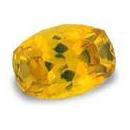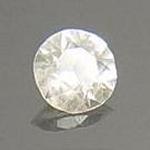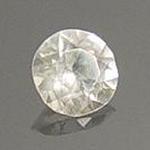|
ClassicGems.net |
|
|
 |
|
Anglesite |
|
|
Discovered in 1832; IMA status: Valid (pre-IMA; Grandfathered) |
|||
|
|
|
Chemistry |
|
|
|
|
|
PbSO4 |
|
|
|
Lead Sulfate |
|
Molecular Weight: |
303.26 gm |
|
Composition: |
Lead |
68.32 % |
Pb |
73.60 % |
PbO |
|
|
Sulfur |
10.57 % |
S |
26.40 % |
SO3 |
|
|
Oxygen |
21.10 % |
O |
|
|
|
|
|
100.00 % |
|
100.00 % |
= TOTAL OXIDE |
|
|
|
||||
|
Classification |
|
|
|
|
|
Sulfates |
|
|
6/A.09-50 |
|
|
|
7 : SULFATES (selenates, tellurates, chromates, molybdates,
wolframates) |
|
Related to: |
Barite Group. Isostructural with Barite and Celestine. |
|
Members of Group: |
Barite Group: Anglesite, Barite, Celestine, Hashemite |
|
Varieties: |
Argentiferous Anglesite, Barytoanglesite, Cuprian Anglesite |
|
Synonyms: |
Lead Spar, Lead sulphate, Lead Vitriol, Sulphate of Lead, Lead mineralized by vitriolic acid |
|
|
|
|
Crystal Data |
|
|
|
|
|
Crystals are typically elongated with rhomboidal cross-section, prismatic with large {210}, vertically striated, or large {011} with {101} and {102}; tabular on {001} or {100}; equant {111} and {211}, may exhibit 20 other minor forms, to 0.5 m. Also nodular, stalactitic, granular, massive, banded around a core of Galena. |
|
|
None |
|
|
|
|
|
Physical Properties |
|
|
|
|
|
Good on {001}, Distinct on {210}, on {010} in traces. Parting: Translation gliding and twin gliding occur (as in Baryte). |
|
|
Conchoidal |
|
|
Brittle |
|
|
2.5 - 3.0 |
|
|
6.37 - 6.39 (g/cm3) |
|
|
May fluoresce Yellow and Golden Yellow under UV. |
|
|
Not Radioactive |
|
|
Health Warning: |
CAUTION: Contains Lead. Wash hands after handling. Do not lick or ingest; do not inhale dust when breaking. Do not grind dry. |
|
|
|
|
Optical Properties |
|
|
|
|
|
Colorless to White, often tinted Grey, Yellow, Green or Blue, rarely Violet; Colorless in transmitted light. |
|
|
Transparent, Translucent, Opaque |
|
|
Adamantine, Resinous to Vitreous |
|
|
1.877 - 1.894 Biaxial ( + ) |
|
|
0.017 |
|
|
Strong; r < v (0.044 - equal to diamond) |
|
|
None |
|
|
|
|
|
Occurances |
|
|
|
|
|
Geological Setting: |
Common in the oxidized zone of lead deposits, where it may constitute an important ore. |
|
Common Associations: |
Cerussite, Galena, Gypsum, Lanarkite, Leadhillite, Linarite, Massicot, Mimetite, Pyromorphite, Sulphur, Wulfenite |
|
Common Impurities: |
Ba, Cu |
|
Type Locality: |
Parys Mountain Mines (Paris Mine; Parys Mine; Mona Mine; Morfa Du Mine), Amlwch, Isle of Anglesey (Gwynedd; Anglesey), Wales, UK |
|
Year Discovered: |
1832 |
|
View mineral photos: |
|
|
|
|
| Unusual Gem Categories |
|
|
|
|
|
Poisonous Gems |
|
|
|
|
|
More Information |
|
|
|
|
|
|
|
|
|
|
|
Anglesite is a rare lead sulfate mineral that is a member of the Barite Group of minerals that includes Anglesite, Barite and Celestine. Anglesite is a very rare and beautiful gem. Colors range from colorless to pale yellow to orange. The dispersion of Anglesite is equal to that of a diamond, so well cut gems are truly magnificent and bright. It is a difficult gem to cut due to its low hardness and good cleavage. Anglesite is a very dense and heavy gem because of its high lead content (68%). The two most notable locations for gem quality crystals are Tsumeb, Namibia and Touissit, Morocco. Anglesite was named in 1832 by Francois Sulpice Beudant (1787 - 1850), French mineralogist and geologist, for the type locality, the Parys Mine on the Island of Anglesey (Ynys Môn) in Wales, U.K. There are a few localities for well-crystallized Anglesite specimens. They include: the Type Locality at Parys Mountain, Anglesey, Wales. In England, at Matlock and Cromford, Derbyshire, and Caldbeck Fells, Cumbria. From Leadhills, Lanarkshire, and Wanlockhead, Dumfriesshire, Scotland. At Bleiberg, Carinthia, Austria. From Mežica (Mies), Slovenia. In Germany, at M¨usen, Littlefeld, Siegen, and other places in Siegerland. From Monteponi and Montevecchio, near Iglesias, Sardinia. In Russia, at Beresovsk, near Yekaterinburg (Sverdlovsk), Middle Ural Mountains, and at Nerchinsk, Siberia. From Sidi-Amor-ben-Salem, Tunisia. Fine crystals at the Touissit mine, near Oujda, Morocco. Very large crystals from Tsumeb, and in the Kombat Cu–Pb–Ag mine, 49 km south of Tsumeb, Namibia. In the USA, from the Wheatley mine, Phoenixville, Chester County, Pennsylvania; in Idaho, from the Bunker Hill mine, Coeur d’Alene district, in the Hypotheek mine, south of Kingston, and the Last Chance and Tyler mines, Wardner, Shoshone County; in the Eureka Hill mine, Tintic district, Juab County, Utah; from the Grand Reef mine, Graham County, Arizona. In Mexico, from Los Lamentos, Chihuahua; in the Amelia mine, Santa Rosalia, Baja California; at San Felipe Canyon, Aconchi, Sonora. In Australia, large crystals from Broken Hill, New South Wales, and at Dundas, Tasmania. |
|
|
Anglesite gems for sale:
|
|||||||||||||||||||||||||||

